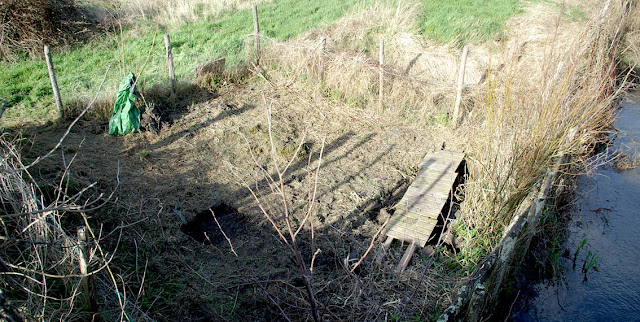We have around two hectares to mow....
that's around five acres in English money...
and the grass needs to be removed...
to lower the fertility and allow the weaker species to grow more successfully...
and hamper the efforts of les orties* [nettles].
To mow we have "Betsy"...
our big two-wheel tractor with its 53" cutter bar.
To rake we have me and a Bulldog wooden rake...
so at the moment we slowly get a field full of humps and rows that become humps....
and humps that become bigger humps....
and so on....
and on!
 |
| Driving Betsy... the grimace is obligatory (as is the hat!) |
When Betsy arrived she wasn't heavy enough at the cutter bar, so a cut of around three inches...
[or fifteen centimetres... I am of old measure]...
became a one foot high trim whenever the wheel hit a molehill.
It was very tiring to use and left me aching...
then the suppliers, Trackmaster, sent me two weights to attach to the bar and all changed...
she still bucks at humps but it is easier to get the front down again and she is, overall, more controllable...
which is vital when working near the willows!!
And I have since added a pair of large, wide skids... as those that are supplied as standard, just cut deep two-inch furrows!!
 |
| It is a big meadow.... this is the smaller bit.... |
The other reason for being able to mow large areas quickly and easily is that the meadow has Creeping Thistle [Cirsium arvense] Chardon des champs...
which needs to be kept cut before it flowers and the wind dispersed seed blows everywhere.
This is what the Wildlife Trusts have to say on the subject.
So you can see that it would not be beneficial to the birds to eradicate it completely...
not that I think I could!!
And, in 2016, thanks to the Barn Owl Trust and Mammal Society....
and Pauline's research....
the mowing regime has changed yet again... but that will be another post!
The selected areas of nettles [*les orties] that I am mowing are to reduce their competition with the grass.
I have no intention of trying to win the that battle either as...
[1] we want the butterflies that use nettle as a foodplant for the young... and
[2] we use the nettles as fertilizer and occasionally as food.
Well, that's my excuse, anyhows!!
 |
| Still mowing.... here at least you can see one of the paths along the edge of the bief (millstream). |
so I'm driving one of the slowest Ferraris on the planet....
but there is a big advantage with that...
we are working the land for the wildlife it contains and being able to stop instantly and walk forward to inspect for nests when birds fly up is a great help...
also, by cutting the grass and not chopping it with a flail or a whirling blade, allows the grass to fall aside and allows small beasts to fly, walk, run away.
Occasionally I get flying voles...
these rocket out of the grass and run along on the top, before diving back into the sward...
when they run ahead, this is usually repeated a few seconds later.
Betsy has another attachment...
a big wood-chipper that can handle up to three inch trunks....
but that's yet another posting.
/|________________________________________________|\
* Les Orties = The Nettles
(Thank you Susan for the correction.
[The Nettles is a Celtic band - J.Nettles is an actor])


























